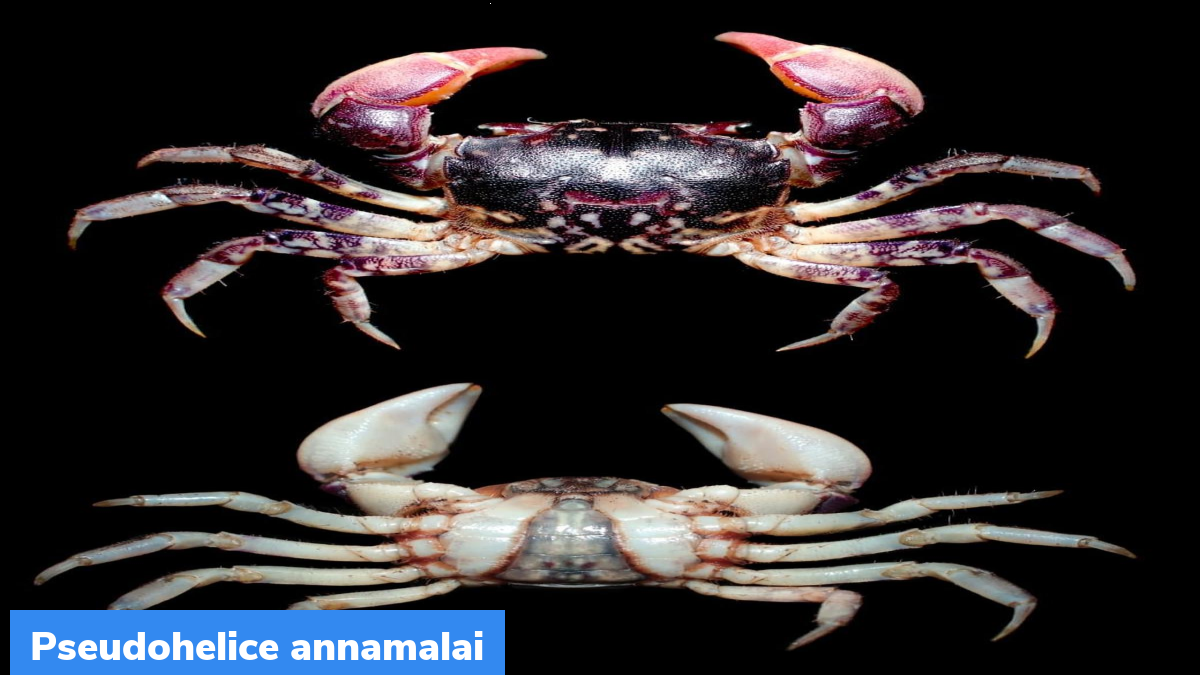Pseudohelice annamalai
A new species of estuarine crab named Pseudohelice annamalai was discovered in Cuddalore District in Tamil Nadu.
About Pseudohelice annamalai
- The species Pseudohelice annamalai was discovered at the mangroves in Parangipettai, close to the Vellar River estuary in Cuddalore district.
- The species’ name recognizes 100 years of service by Annamalai University in the areas of research and education.
- The new species is found across the Indian Subcontinent and the eastern Indian Ocean.
- It is identified by the presence of dark purple to dark grey hue, with irregular light brown, yellowish brown or white patches on the posterior carapace. Its chelipeds are light brown in colour.
- The new species is small, with the maximum width of 20 mm.
- It dwells in muddy banks of mangroves. Its burrows are situated close to the pneumatophores of Avicennia mangroves.
- The burrows are 25-30 cm deep and are branched, with larger pellets around the entrance.
- The new species is not aggressive and can move at a fast pace like intertidal crabs.
Significance of the discovery
Before the discovery of Pseudohelice annamalai, only two species have been identified from the genus Pseudohelice. They are Pseudohelice subquadrata and Pseudohelice latreilli. The discovery marks the first ever recorded finding of the genus from the high intertidal areas in front of the Centre of Advanced Studies (CAS) in Marine Biology, Annamalai University. The specimens of the new species were collected from the high intertidal areas of the Vellar River estuary, where mangroves were artificially planted on 5 hectares along the northern bank of the river.
The presence of the genus Pseudohelice links the distribution gap between the western Indian Ocean and the western Pacific Ocean. It provides more evidence of the geographic isolation of some marine organisms belonging to the eastern Indian Ocean.
Month: Current Affairs – November, 2022
Category: Environment Current Affairs


